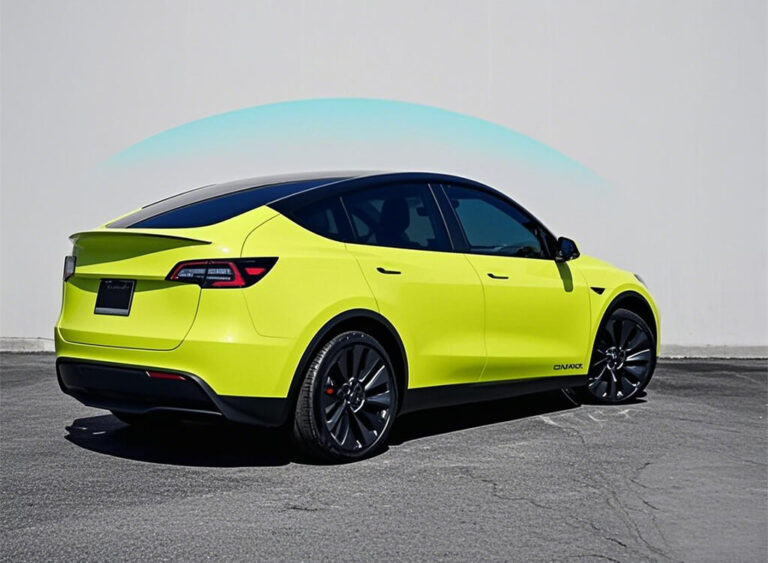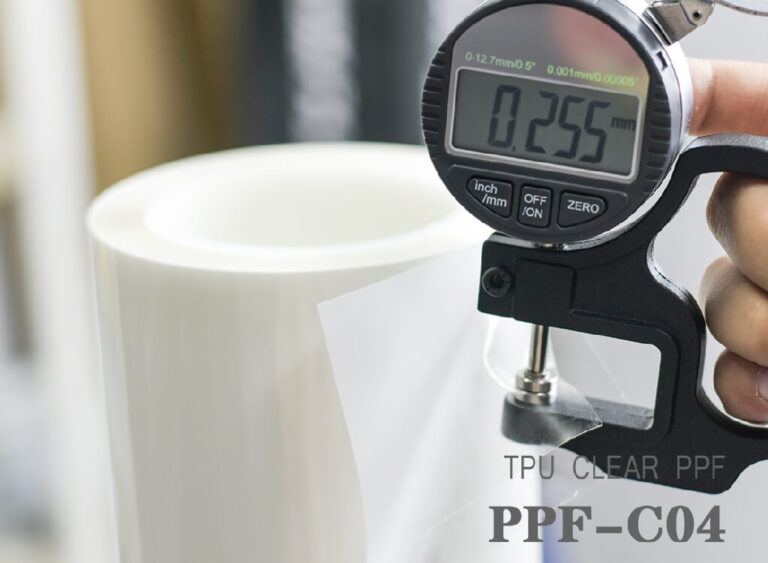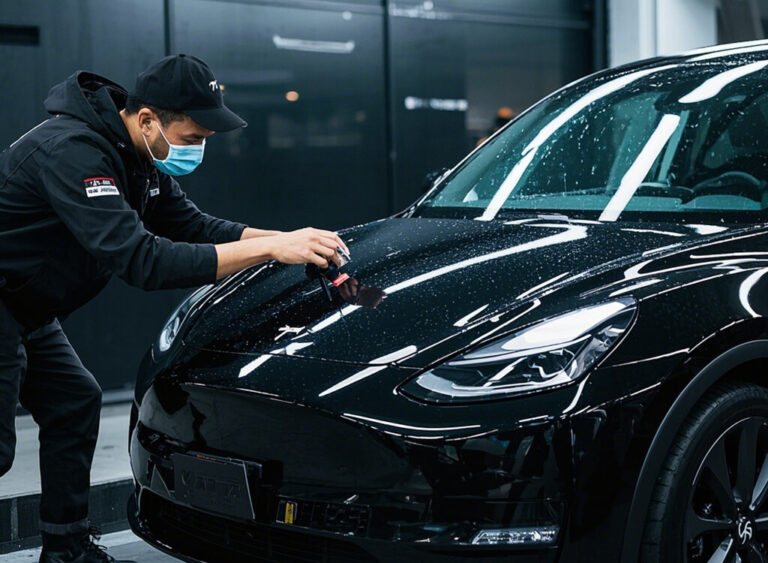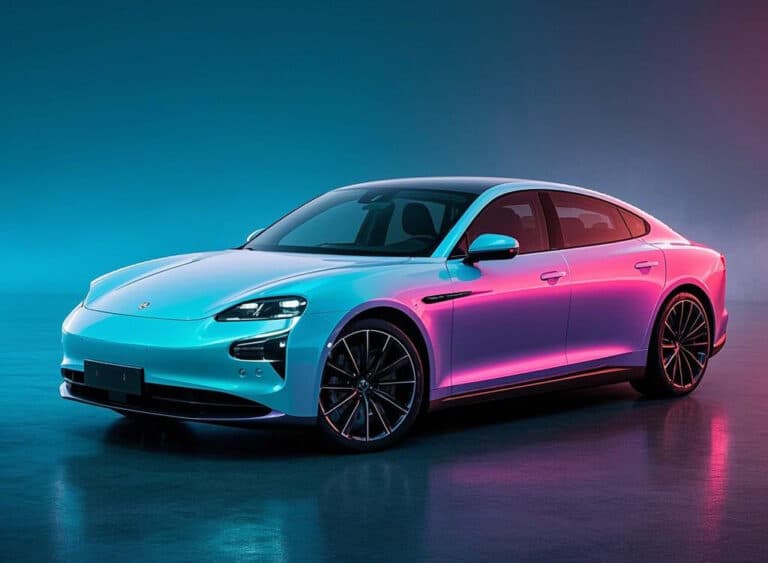How Long Does Paint Protection Film Take to Cure: Installation, Curing Time, and Maintenance
What Paint Protection Film (PPF) Does for Your Vehicle? Paint protection film, commonly called PPF or clear bra, is a transparent and durable polyurethane coating applied to your car’s painted surfaces to guard against rock chips, scratches, swirl marks, and other environmental hazards. Beyond just cosmetic benefits, automotive paint protection film helps preserve your vehicle’s resale value by shielding it from UV rays, acidic bird droppings, tree sap, road grime, and bug splatter. This invisible layer acts as a vehicle surface preservation barrier that keeps your paintwork looking newer for longer, making it an excellent long-term investment for daily drivers and high-end vehicles alike. But How Long Does PPF Take to Cure?

How Long Does Paint Protection Film Take to Cure?
So, how long does PPF take to fully cure? The short answer is: it depends. While the initial curing phase for paint protection film typically takes 24 to 48 hours, complete curing can take anywhere from 7 days to 30 days based on the film type, environmental conditions, and post-installation care. During this period, the film’s adhesive continues to bond fully to the car’s surface, solvents evaporate, and the material settles into the curves and contours of your vehicle. It’s essential to treat the car with care during this time, especially if you’re planning to apply a ceramic coating over PPF or subject your car to tough weather or driving conditions.
Different Types of PPF and Their Curing Time
One of the key factors that determine PPF curing time is the specific type of film used. Different types of paint protection film and their curing time vary depending on the manufacturer, thickness, and adhesive formula. For instance, fast-cure adhesive PPF brands like STEK, Kavaca, and XPEL have developed advanced formulas that allow the film to bond quicker without sacrificing durability. Other films come with built-in coatings, such as ceramic-coated PPF vs regular PPF, which may require a longer curing time due to additional layers. Some high-tech options also use UV curing PPF film benefits, allowing installers to accelerate the curing process using special lighting systems. The best approach is always to follow the manufacturer’s instructions for PPF application and curing to ensure a flawless result.
| PPF Type / Brand | Adhesive Technology | Surface Coating | Curing Time (Initial) | Full Cure Time | Notes |
|---|---|---|---|---|---|
| XPEL Ultimate Plus | Self-healing, fast-cure | None (regular PPF) | 24–48 hours | 7–10 days | Known for reliability and quick adhesion. |
| STEK DYNOshield | Advanced hydrophilic | Pre-coated with ceramic | 24–72 hours | 10–14 days | Ceramic layer adds extra curing time. |
| Kavaca Instant Healing | Nano-resin, fast-cure | Ceramic-infused | 12–24 hours | 5–7 days | One of the fastest curing ceramic PPFs on the market. |
| SunTek Ultra | Traditional pressure-based | None (regular PPF) | 24–48 hours | 7–10 days | Smooth install but may require heat to remove bubbles during curing. |
| 3M Scotchgard Pro Series | Pressure-sensitive adhesive | None (regular PPF) | 24 hours | 7–10 days | Popular among dealerships; durable but requires careful maintenance. |
| Hexis BodyFence | Advanced polymer adhesive | Hydrophobic topcoat | 48–72 hours | 10–14 days | Great for custom installations; longer settling time. |
| LLumar Platinum | Self-healing polymer | Optional topcoat | 24–48 hours | 7–10 days | Offers good clarity and self-healing properties. |
| UV-Curable PPF (various brands) | UV-reactive curing | Varies (may include ceramic) | ~6 hours (with UV curing) | 1–2 days (with UV curing) | Requires special UV lamps; excellent for high-volume pro shops. |
| ELOV Nano PPF | Nano-adhesive + self-healing | Built-in nano-ceramic layer | 24–36 hours | 7–10 days | Blends clarity with hydrophobicity; ideal for premium finishes. |

How Temperature Impacts Paint Protection Film Curing
Temperature is one of the most influential factors in the curing time for paint protection film. The best temperature for PPF installation is between 50°F to 90°F (10°C to 32°C). Within this range, the adhesive remains flexible and active, making the film easier to apply and more likely to bond properly. If it’s too cold, the adhesive won’t activate fully, and the film may not stick correctly. On the flip side, if it’s too hot, the film might stretch too much during application, potentially causing long-term issues like wrinkling or edge lift. Whether you’re a DIY enthusiast or working with a professional installer, always make sure the temperature is within the ideal range before beginning the PPF process.
| Temperature Range | Effect on PPF Installation and Curing | Recommendation |
| Below 50°F (10°C) | Adhesive becomes stiff; bonding is weak; may lead to poor adhesion, bubbles, or premature lifting. | Avoid installation; wait for warmer temps. |
| 50°F – 70°F (10°C – 21°C) | Adhesive starts to activate; film is workable but may require extra time for bonding and some installer experience to ensure proper adhesion. | Acceptable, but monitor closely. |
| 70°F – 85°F (21°C – 29°C) | Ideal range: Adhesive is flexible, application is smooth, and curing occurs efficiently without overstressing the film. | Recommended for best results. |
| 85°F – 90°F (29°C – 32°C) | Still within acceptable limits, but film may become slightly stretchy; must handle carefully to avoid distortion or wrinkling. | Use caution; apply with precision. |
| Above 90°F (32°C) | Adhesive may set too quickly; film can overstretch or warp; high risk of wrinkles, edge lift, or long-term failure. | Avoid unless in a temperature-controlled room |
Why Humidity Plays a Critical Role in Curing Success
Humidity is another major environmental element that directly affects PPF curing conditions. The humidity impact on PPF curing is often underestimated, but high humidity can actually slow down the evaporation of solvents, which prolongs the adhesive setting time. Excessive moisture in the air may even cause issues like bubbling under PPF or edge lifting after PPF application. Ideally, the installation should happen in an environment with a relative humidity of 40% to 60%, which is optimal for achieving a firm bond and preventing film failure. Professional PPF shops often use dehumidifiers and temperature-controlled rooms to regulate conditions during the curing phase.
| Humidity Level | Impact on Curing | Recommended Actions |
| Below 40% | Low humidity can cause the adhesive to set too quickly, leading to improper bonding and potential failure of the PPF. | Use a humidifier to increase moisture in the air to maintain an optimal curing environment. |
| 40% to 60% | This is the optimal range for curing. It allows for proper adhesive activation and film bonding, resulting in a durable and smooth finish. | Maintain humidity levels within this range for best results during installation. |
| Above 60% | High humidity slows down solvent evaporation, prolonging curing time. It can also cause bubbling and edge lifting, compromising the PPF installation. | Use dehumidifiers to reduce moisture levels in the air and speed up the curing process. |
When It’s Safe to Drive After Paint Protection Film Installation
While it might be tempting to hit the road right after getting paint protection film installed, there are a few things to consider. You can technically drive your car immediately, but experts advise you to avoid heavy rain, high-pressure car washes, and extreme sunlight for at least the first 24 to 48 hours after PPF installation. During this initial curing phase, the film is still bonding and may be vulnerable to shifting or bubbling if exposed to water, heat, or friction. For the first week after PPF installation, avoid parking under trees (to prevent sap or bird droppings), don’t use any abrasive cleaning products, and stay away from highways if possible. These simple precautions help ensure a long-lasting, flawless finish.
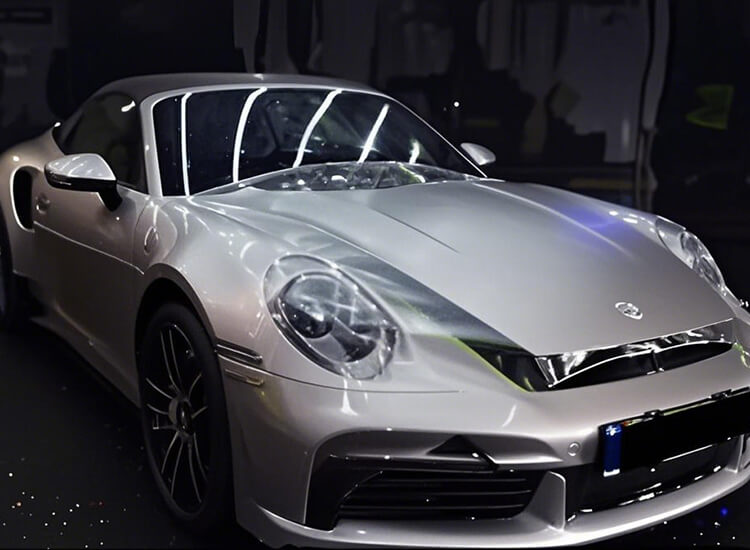
How to Know If Your Paint Protection Film Is Fully Cured
Wondering how to tell if PPF is fully cured? A few key signs indicate whether your film has been properly set. A fully cured film should be completely clear, smooth to the touch, and show no signs of tackiness or moisture bubbles. Visually inspect the edges to ensure there is no lifting. If the film looks foggy or if you notice air bubbles, it likely needs more time to cure. For minor issues like small bubbles or lifted edges, you can use a heat gun or squeegee to reset the bond—but always proceed with caution. When in doubt, consult your installer to avoid damaging the film or the paint underneath.
Applying Ceramic Coating Over PPF: When and Why to Do It
One of the most frequently asked questions in car care is: can you apply ceramic coating over PPF? The answer is yes, and it’s actually a great way to enhance your vehicle’s protection. Ceramic coating after PPF application adds a slick, hydrophobic layer that repels water, grime, and contaminants while making maintenance easier. However, you must wait until the film is fully cured—usually 7 to 14 days—before applying the coating. Doing it too early could trap solvents and weaken the adhesive, leading to PPF peeling or reduced effectiveness. Once applied correctly, the combination of PPF and ceramic coating creates a dual-layer defense against UV rays, oxidation, and chemical damage.
Essential Maintenance Tips for the First Few Weeks After Installation
Proper PPF maintenance during curing is essential to maximize longevity and protection. During the first 2 to 3 weeks, avoid washing your car with strong chemicals, do not wax the surface, and definitely stay away from high-pressure washers—especially around the film’s edges. For routine cleaning, use pH-balanced soap and a soft microfiber towel. If your car gets bird droppings, sap, or mud on it, gently remove the contaminant as soon as possible to prevent stains. After the curing period, applying wax or a sealant can help preserve gloss and enhance water-beading properties. These steps are simple, but they dramatically extend the PPF lifespan and protect the underlying paintwork.
End: Investing in PPF Is Investing in Your Car’s Future
Understanding how long paint protection film takes to cure is more than a detail—it’s the foundation for long-term success. By being mindful of the type of film, installation conditions, and PPF maintenance tips during the curing period, you’re ensuring that your car stays protected, glossy, and showroom-ready for years to come. Whether you’re looking for fast-cure adhesive PPF brands, deciding if ceramic coating over PPF is worth it, or just wanting to avoid bubbling under PPF, being informed puts you in control. Treat your vehicle right during this critical period, and you’ll be rewarded with flawless protection and stunning aesthetics every time you hit the road.
FAQ: Questions About PPF Installation and Curing
How long does PPF take to fully cure?
The time it takes for paint protection film (PPF) to fully cure varies depending on the type of film, the environmental conditions, and the temperature and humidity levels. Typically, the initial curing time takes 24 to 48 hours, but complete curing can take 7 to 30 days. During this period, the adhesive in the PPF continues to bond and set fully. While you can drive your car after installation, it’s important to avoid direct sunlight, heavy rain, and aggressive washing during the curing process to ensure the film sets properly.
What does PPF look like after 5 years?
After five years of use, paint protection film can still maintain its protective qualities if cared for properly. The film typically remains clear and smooth, but there may be signs of wear from environmental exposure. Depending on the conditions, you might notice slight yellowing, especially in areas exposed to harsh UV rays. The film should still provide effective protection against scratches, rock chips, and chemical contaminants. Regular maintenance, such as washing with pH-balanced soap and avoiding harsh abrasives, can help preserve the film’s appearance and performance. If the film has been professionally installed and maintained, it should still be functioning well, even after years of protection.
How long after PPF can I drive?
While it’s technically safe to drive immediately after PPF installation, it’s recommended to avoid heavy driving conditions for 24 to 48 hours. During this initial curing phase, the adhesive on the film is still setting. Avoiding heavy rain, high-pressure car washes, and prolonged exposure to direct sunlight helps ensure that the film adheres properly and prevents issues like bubbling, edge lifting, or damage to the adhesive. For the first week, try to minimize exposure to harsh environmental conditions to ensure the best bonding process.
How long to wait before washing a car after PPF?
It’s generally recommended to wait at least 7 days before washing your car after PPF installation. This allows the film to cure and bond fully with the vehicle’s paint. In the first week, avoid using high-pressure washers and harsh chemicals. Instead, wash the car using pH-balanced soap and a soft microfiber cloth to gently clean the surface. Washing your car too soon could risk disturbing the film before the adhesive has fully set, potentially leading to bubbling or peeling. Once the full curing period has passed, you can resume regular washing without worrying about damaging the film.



